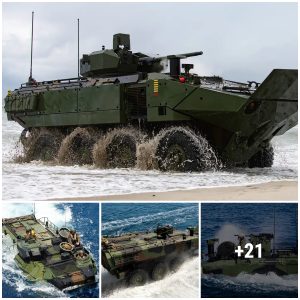The United States Navy’s Gerald Ford Class Supercarrier successfully tested the world’s first electromagnetic catapult system (EMALS) for aircraft launch in July 2017. This technology allows U.S. carriers to more efficiently launch fighters such as the F-18E or F-35C with more fuel and greater weapons payloads.
This was a major technological breakthrough with significant advantages over the steam based catapult launch system installed on the older Nimitz class supercarriers. Just months after this system was first tested, China announced its military’s own successful development of an electromagnetic launch system of its own – set to be integrated into its next generation aircraft carrier. This carrier, the Type 003, began construction at the end of 2017 and is set to be one of the most advanced and largest carriers in service in the world.

China’s electromagnetic launch system was facilitated by Chinese engineers’ successful development of a new integrated propulsion system – a medium voltage direct current transmission network. As well as allowing fighters to launch with greater payloads, the electromagnetic system also puts less strain on their airframes during takeoff and as a result serves to reduce maintenance requirements. The electronic launch systems also increase the sortie rates of carrier air wings by reducing the time needed for launch and landing.
The J-15 carrier based air superiority fighters in service in the Chinese Navy currently carry lower weapons payloads and are able to operate at shorter ranges than their J-11 land based counterparts. The introduction of a carrier based electromagnetic launch system however could well increase the potency of the fighters and allow them to take off with more weapons and fuel.
It could also prove invaluable should China attempt to develop carrier based variants of its next generation multirole or air superiority fighters such as the J-31 or J-20 – particularly in the case of the latter where it’s large size may require a more powerful launch system.
Alongside launching fighters, the electromagnetic launch system would also allow the Chinese Navy to launch heavier platforms such as aerial tankers – though the military currently fields just three – as well as airborne early warning aircraft, anti submarine warfare aircraft and even heavier transports from the carriers’ decks.
The Type 003 is likely to be the first carrier outside the United States to enter service with an electromagnetic launch system, with India’s INS Vishal stalling in development and Russia’s own SHTORM supercarrier concept yet to be approved and commissioned. With the Vishal set to integrate launch systems using technology provided by the United States, China’s ability to design such a system domestically represents its emergence as a major naval and military technological power.
The decision of the People’s Liberation Army Navy to develop and integrate such a system has been a result of hundreds of tests carried out using using J-15 fighters and experience operating the Liaoning, China’s sole operational carrier. Indeed, as the Liaoning has limited combat capabilities it has largely been used as a training platform for the Navy to gain experience in conducting carrier operations – something invaluable for the future development of the Chinese carrier program.
China’s navy has yet to induct a fully indigenous aircraft carrier into service, with its existing Liaoning having been purchased following the collapse of the USSR. The country’s Type 001A is currently undergoing testing and the Type 002 remains under construction – both of which will be based heavily on Russian technologies obtained from the Liaoning and from technological transfers from Russia – with a similar design to the carrier China already fields.
The construction of the Type 003 carrier will however be a landmark for China’s military modernization and represent the country’s first truly indigenous carrier almost entirely reliant on domestically developed technologies – of which the electromagnetic launch system is but one example.
The carrier is expected to weigh 100,000 tonnes – greater than any existing platform other than the 100,000 tonne U.S. supercarriers – and Russia’s SHTORM class supercarrier should it be commissioned. The Type 003 could well pave the way for development of China’s own supercarriers in future – just as the Liaoning paved the way for the Type 003.
Indeed, China’s Navy has proven to be nothing of not ambitious in its weapons programs and the speed with which it has developed its capabilities. The announcement of the electromagnetic launch system represents one critical step in China’s development towards become a world leading naval power able to symmetrically challenge the leading Western surface fleets – something no power including the USSR has been proven capable of since the destruction of the Imperial Japanese Navy.





